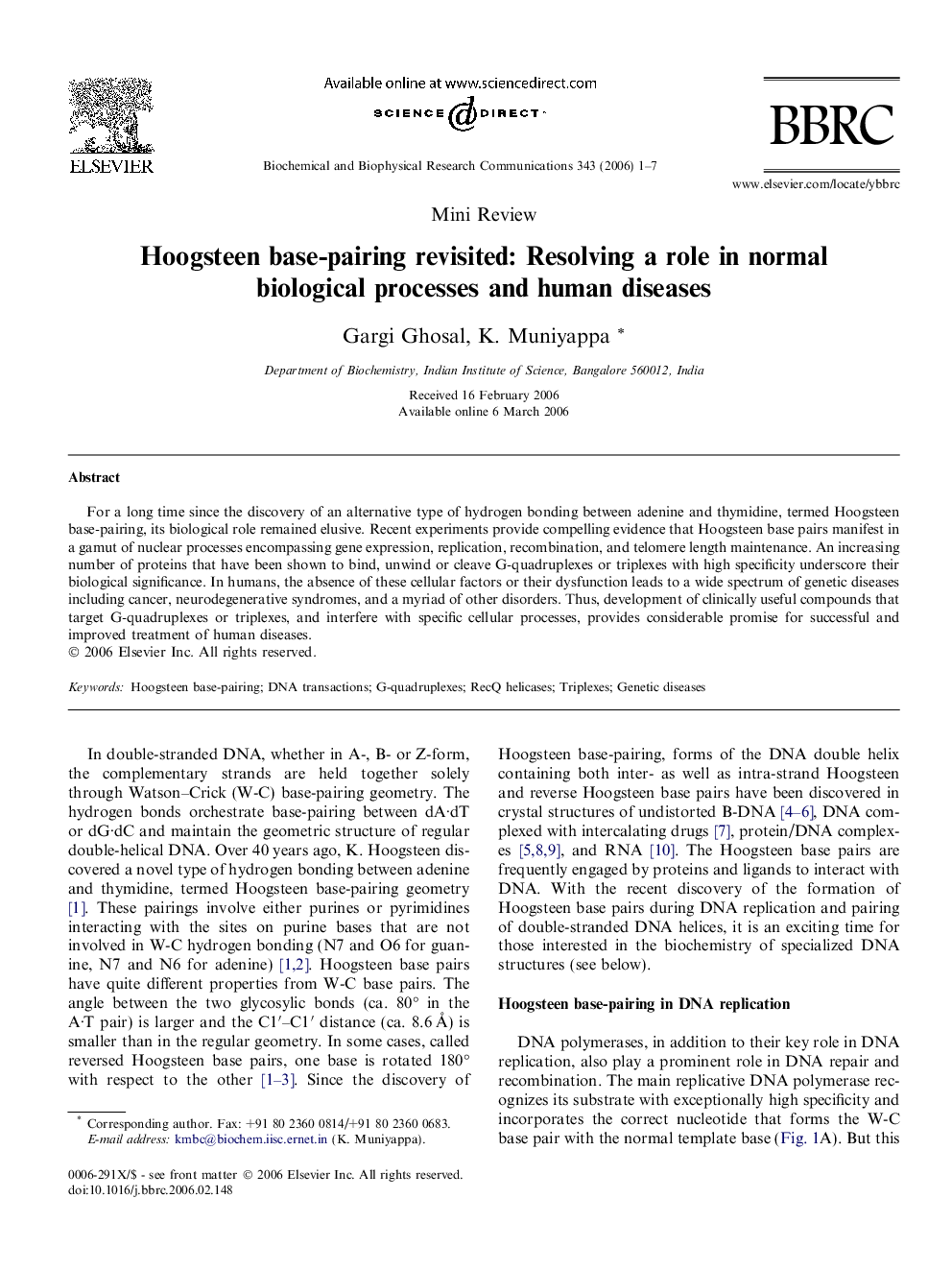| Article ID | Journal | Published Year | Pages | File Type |
|---|---|---|---|---|
| 1940998 | Biochemical and Biophysical Research Communications | 2006 | 7 Pages |
For a long time since the discovery of an alternative type of hydrogen bonding between adenine and thymidine, termed Hoogsteen base-pairing, its biological role remained elusive. Recent experiments provide compelling evidence that Hoogsteen base pairs manifest in a gamut of nuclear processes encompassing gene expression, replication, recombination, and telomere length maintenance. An increasing number of proteins that have been shown to bind, unwind or cleave G-quadruplexes or triplexes with high specificity underscore their biological significance. In humans, the absence of these cellular factors or their dysfunction leads to a wide spectrum of genetic diseases including cancer, neurodegenerative syndromes, and a myriad of other disorders. Thus, development of clinically useful compounds that target G-quadruplexes or triplexes, and interfere with specific cellular processes, provides considerable promise for successful and improved treatment of human diseases.
